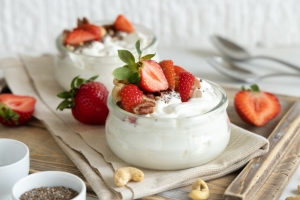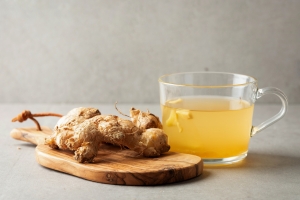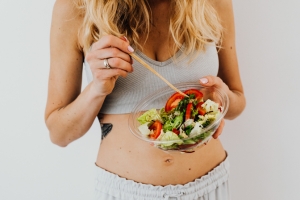Imagine this: you’ve just been diagnosed with diabetes. Your doctor hands you a list of forbidden foods, and right there at the top, alongside sugary drinks and processed snacks, is honey. But what if I told you that this age-old natural sweetener might not be entirely off-limits? That, in fact, it could even offer some surprising benefits?
It might sound counterintuitive, but emerging research suggests that honey, consumed in moderation and with careful consideration, can play a role in managing diabetes. Let’s delve into the fascinating connection between this golden liquid and this chronic condition.
Understanding Diabetes: A Complex Condition

Diabetes is a metabolic disorder characterized by elevated blood sugar levels. This happens when the body either doesn’t produce enough insulin (a hormone that regulates blood sugar) or doesn’t use insulin effectively.
Types of Diabetes: Two Distinct Forms
- Type 1 Diabetes: This is an autoimmune condition where the body’s immune system mistakenly attacks the insulin-producing cells in the pancreas. As a result, the body can’t produce insulin, leading to high blood sugar.
- Type 2 Diabetes: In this type, the body either doesn’t produce enough insulin or the cells become resistant to its effects. This also leads to elevated blood sugar levels.
Recognizing the Signs
Diabetes can manifest through various symptoms, including:
- Increased thirst and urination
- Unexplained weight loss or gain
- Increased hunger
- Fatigue
- Blurred vision
- Slow-healing sores
Honey vs. Sugar: Not All Sweeteners Are Created Equal

While both honey and refined sugar are sweet, their impact on the body differs significantly. This difference lies in their glycemic index (GI) and nutritional composition.
The Glycemic Index (GI): A Measure of Blood Sugar Impact
The GI ranks foods based on how quickly they raise blood sugar levels. Foods with a high GI cause a rapid spike, while those with a low GI lead to a slower, more gradual rise.
- Refined Sugar: This has a high GI, causing blood sugar levels to surge. It’s also devoid of essential nutrients, offering only empty calories.
- Honey: Honey generally has a lower GI than refined sugar, resulting in a more controlled increase in blood sugar. Moreover, it contains antioxidants, enzymes, and other beneficial compounds.
Think of it this way: refined sugar is like a flash flood, overwhelming the body with sugar. Honey, on the other hand, is like a gentle rain, providing a steadier and more manageable supply of glucose.
Honey and Diabetes: Potential Benefits and Considerations

Emerging research suggests that honey, consumed in moderation, may offer certain benefits for people with diabetes:
- Blood Sugar Regulation: Studies indicate that honey might help regulate blood sugar levels and even improve HbA1c (a measure of long-term blood sugar control). For instance, a study published in the journal AYU found that honey consumption led to lower HbA1c levels in individuals with type 2 diabetes. HbA1c gives you an average blood sugar level over the past 2 to 3 months. It works by measuring the percentage of blood sugar attached to hemoglobin, the oxygen-carrying protein in red blood cells.
- Antioxidant Protection: Honey is a source of antioxidants, which can help protect against oxidative stress, a contributor to diabetes complications.
- Anti-Inflammatory Effects: Chronic inflammation is often associated with diabetes. Honey’s anti-inflammatory properties may help reduce this inflammation.
It’s important to note that research on honey and diabetes is ongoing, and more studies are needed to fully understand its effects, especially in individuals with type 1 diabetes.
Incorporating Honey into a Diabetic Diet: A Balanced Approach

If you’re considering adding honey to your diabetes management plan, here are some key points to keep in mind:
- Type 1 Diabetes: For individuals with type 1 diabetes, honey should be approached with caution. Since their bodies don’t produce insulin, any form of sugar, including honey, can lead to blood sugar spikes. It’s crucial to work closely with a healthcare provider to determine if and how honey can be safely incorporated into their meal plan.
- Type 2 Diabetes: While honey may offer some benefits for people with type 2 diabetes, moderation is key. Start with a small amount (1-2 teaspoons) and monitor your blood sugar levels carefully.
- Choose Raw Honey: Opt for raw, unprocessed honey, as it retains more of its natural enzymes and antioxidants.
- Pair with Protein and Fiber: Combining honey with protein-rich foods like yogurt or nuts, or fiber-rich foods like fruits and vegetables, can help slow down sugar absorption and prevent blood sugar spikes.
Honey Recipes for Diabetes Management: Delicious and Nutritious

Here are a few ideas for incorporating honey into your diet:
1. Honey and Yogurt Parfait
This parfait is a perfect breakfast or snack option.
Ingredients:
- 1/2 cup plain Greek yogurt
- 1/4 cup berries (strawberries, blueberries, raspberries)
- 1 tablespoon chopped walnuts
- 1 teaspoon raw honey
- A sprinkle of cinnamon (optional)
Instructions:
- Layer yogurt, berries, walnuts, and honey in a glass or bowl.
- Repeat the layers.
- Top with a sprinkle of cinnamon, if desired.
2. Honey-Lemon Ginger Tea
This soothing tea can be enjoyed warm or cold.
Ingredients:
- 1 cup hot water
- 1 tablespoon freshly grated ginger
- 1 tablespoon lemon juice
- 1 teaspoon raw honey
Instructions:
- Steep ginger in hot water for 10 minutes.
- Stir in lemon juice and honey.
3. Honey-Mustard Salad Dressing
This versatile dressing adds a touch of sweetness to your salads.
Ingredients:
- 2 tablespoons olive oil
- 1 tablespoon apple cider vinegar
- 1 teaspoon Dijon mustard
- 1 teaspoon raw honey
- Salt and pepper to taste
Instructions:
- Whisk together all ingredients in a small bowl.
4. Ayurvedic Spice Blend with Honey
This blend combines the potential benefits of various spices with the goodness of honey.
Ingredients:
- 1/2 teaspoon turmeric powder
- 1/4 teaspoon ginger powder
- 1/4 teaspoon cinnamon powder
- A pinch of black pepper
- 1 teaspoon raw honey
Instructions:
- Mix the spices together.
- Consume 1/2 teaspoon of this spice blend with 1 teaspoon of honey. You can have it directly or mix it with warm water or milk.
Choosing the Right Honey: Quality Matters

When selecting honey, look for raw, unprocessed varieties. Different types of honey, such as Manuka, acacia, and buckwheat, offer unique flavor profiles and potential health benefits.
A Word of Caution: Moderation and Individualized Approach
While honey can be a part of a healthy diet for people with diabetes, it’s essential to consume it in moderation and monitor your blood sugar levels.
- Potential Risks: Excessive honey intake can lead to blood sugar spikes, weight gain, and other health issues.
- Individualized Approach: People with diabetes respond differently to foods. What works for one person may not work for another.
- Consult Your Healthcare Team: Always consult your doctor or a registered dietitian before making significant dietary changes, including adding honey to your diet. They can help you determine the appropriate amount and ensure it aligns with your overall diabetes management plan.
Real-Life Experience: Sarah’s Story
Sarah, a 55-year-old woman with type 2 diabetes, was initially hesitant to include honey in her diet. After consulting her dietitian, she started incorporating small amounts of raw honey into her breakfast and found that it helped stabilize her blood sugar levels. She also noticed an improvement in her energy levels and overall well-being. Sarah’s experience highlights the importance of personalized guidance and careful monitoring when incorporating honey into a diabetes management plan.
Honey, with its natural sweetness and potential health benefits, can be a valuable addition to a diabetes-friendly diet. By understanding the science, choosing the right type of honey, and consuming it mindfully, you can enjoy its goodness while supporting your overall health and well-being.
References
- Natural Honey and Cardiovascular Risk Factors in Patients with Type 1 Diabetes Mellitus (M. Al-Waili et al., 2004) – This study explored the effects of natural honey on cardiovascular risk factors in patients with type 1 diabetes.
- Effects of natural honey consumption in diabetic patients: an 8-week randomized clinical trial (Bahrami et al., 2008) – This randomized clinical trial investigated the effects of honey consumption on various parameters in diabetic patients.
- The effect of honey on fasting blood sugar (FBS), hemoglobin A1c (HbA1c), triglyceride (TG), total cholesterol (TC), high density lipoprotein (HDL) and low density lipoprotein (LDL) compared to sucrose in patients with type 2 diabetes mellitus ( Yaghoobi et al., 2008) – This study compared the effects of honey and sucrose on blood sugar and lipid profiles in patients with type 2 diabetes.
- Effects of honey consumption on glycemic control, lipid profile, and body weight in patients with type 2 diabetes mellitus: a meta-analysis of randomized controlled trials (Hu et al., 2020) – This meta-analysis examined the overall effects of honey consumption on glycemic control, lipid profile, and body weight in individuals with type 2 diabetes.
- Honey in Diet for Managing Diabetes Mellitus: A Review (Erejuwa et al., 2012) – This review article provides a comprehensive overview of the potential benefits and considerations of including honey in a diabetes management diet.










8 Responses
Well, this is certainly a sticky situation! (Pun intended, haha!) I’ve always been told that honey is a big no-no for diabetics. My grandma had type 2 diabetes, and her doctor was super strict about sugar. This article is making me question everything! I love the idea of adding a little honey to my tea, but I’m scared it’ll send my blood sugar through the roof. You mention “moderation,” but what does that even mean for someone with type 2 diabetes? Like, are we talking a drop, a teaspoon, a whole jar? (Just kidding about the jar… mostly.) And is there a specific type of honey that’s best, or is any old honey from the supermarket okay?
Hi Janet, thanks for your comment and the great pun! I understand your hesitation. It’s a common misconception that people with diabetes have to avoid all things sweet, including honey. The truth is, it’s more about the type and quantity of sweetener. “Moderation” can be a tricky word, but for someone with type 2 diabetes, starting with 1-2 teaspoons of honey a day is generally recommended. It’s crucial to monitor your blood sugar levels closely after consuming it to see how your body reacts. Definitely not a whole jar! 😉 As for the type of honey, raw, unprocessed honey is best because it retains more of its beneficial nutrients and enzymes. Look for labels that say “raw” or “unfiltered.” You might find a wider selection at health food stores or farmers’ markets. And remember, it’s always best to consult your doctor or a registered dietitian for personalized advice based on your specific needs. They can help you determine the right amount of honey and how to incorporate it into your meal plan safely.
This article is interesting, but I’m a bit skeptical about the whole honey and type 1 diabetes thing. My daughter was diagnosed with type 1 when she was just 5, and we’ve always been told that sugar is sugar, whether it comes from a candy bar or a beehive. It all affects her blood sugar the same way. Is there any actual proof that honey is safe for type 1 diabetics? I’m not going to risk my daughter’s health based on some internet article. Also, those recipes sound delicious, but are they really practical for a busy mom like me?
Hi Barbara, thanks for raising these important concerns. I completely understand your skepticism, especially when it comes to your daughter’s health. You’re right to be cautious about type 1 diabetes and sugar intake. It’s true that for people with type 1 diabetes, their bodies don’t produce insulin, so any form of sugar, including honey, needs to be carefully managed. While some studies (included as resources in the article) suggest potential benefits of honey, the research on type 1 diabetes specifically is still limited. The studies mentioned mainly focus on type 2 diabetes. Therefore, it’s absolutely crucial to work closely with your daughter’s doctor or a registered dietitian before introducing honey into her diet. They can assess her individual needs and provide the safest and most appropriate guidance. As for the recipes, I understand that time is precious, especially for busy moms! These are just suggestions, and you can always modify them to fit your schedule. For example, the Honey and Yogurt Parfait can be prepped the night before for a quick and easy breakfast. The key takeaway here is that when it comes to type 1 diabetes and honey, professional medical advice is non-negotiable. Your daughter’s health is paramount!
This is really interesting! I always thought honey was a big no-no for diabetics. My grandma has type 2 diabetes, and she loves honey. I’m going to tell her about this, but I’m a little worried she’ll go overboard. How do I convince her that “moderation” is still important? Also, what’s the difference between raw honey and the regular kind you find in the supermarket? Is it worth the extra cost? I saw a “Manuka” honey in the store the other day, and it was super expensive!
Sophia, you’re right to emphasize moderation! Maybe you can frame it as “savoring” the honey instead of just consuming it. As for raw honey, it’s less processed than regular honey, so it retains more of the natural enzymes, antioxidants, and pollen, which are thought to be beneficial. Regular honey is often heated and filtered, which can remove some of these nutrients. Manuka honey is a special type from New Zealand known for its potent antibacterial properties, which is why it’s pricier. Whether it’s worth the extra cost depends on your budget and priorities. For your grandma, starting with a good quality raw honey might be a good compromise.
Okay, so honey might be okay for diabetics in small amounts. But what about other natural sweeteners? What’s the deal with agave nectar, or stevia? Are those better options? I’m trying to cut back on sugar in general, and I’m overwhelmed by all the choices! Also, the honey-mustard dressing sounds yummy, but I hate Dijon mustard. Can I use regular mustard instead? And is this article suggesting that honey can cure diabetes? Because that sounds a little too good to be true, lol.
Harper, you’re asking great questions! Agave nectar has a lower GI than sugar, but it’s high in fructose, which can be problematic in large amounts. Stevia is a natural, calorie-free sweetener that doesn’t raise blood sugar, so it’s a good option for many people with diabetes. It really comes down to personal preference and how your body responds. And yes, you can definitely use regular mustard in the dressing if you prefer! As for curing diabetes, absolutely not! This article is about how honey, in moderation and as part of a healthy diet, might offer some benefits for managing blood sugar levels. It’s definitely not a cure, and it’s always important to work with your doctor or dietitian.